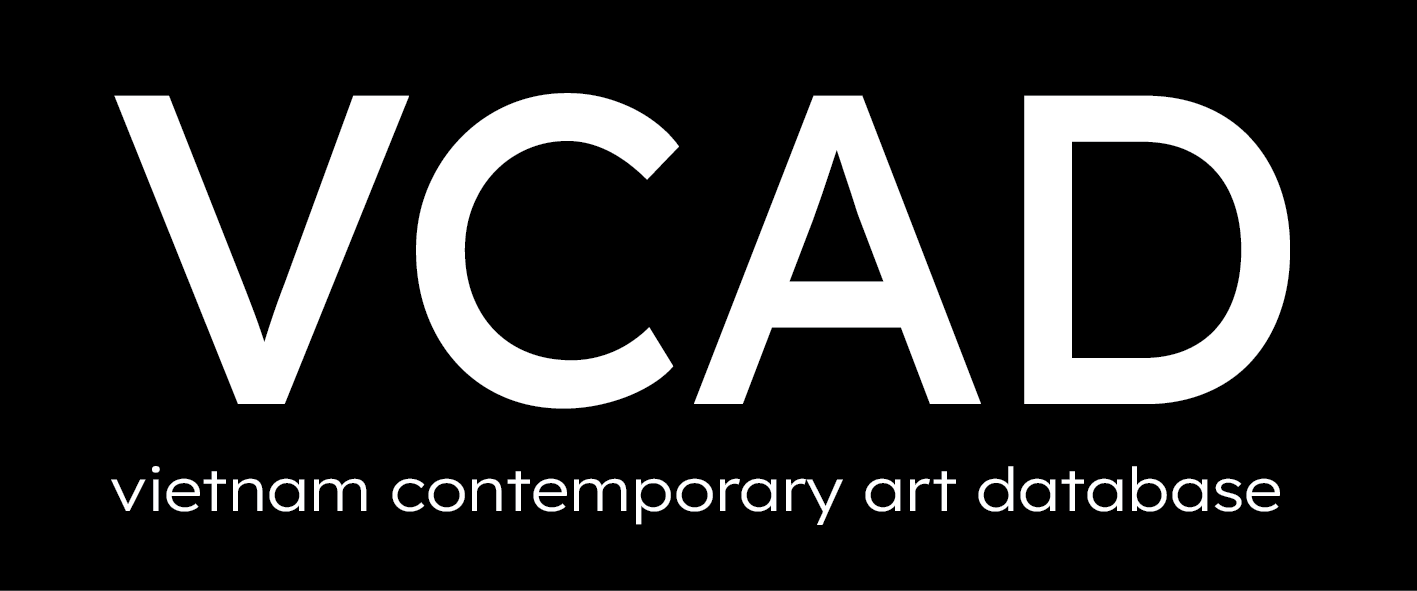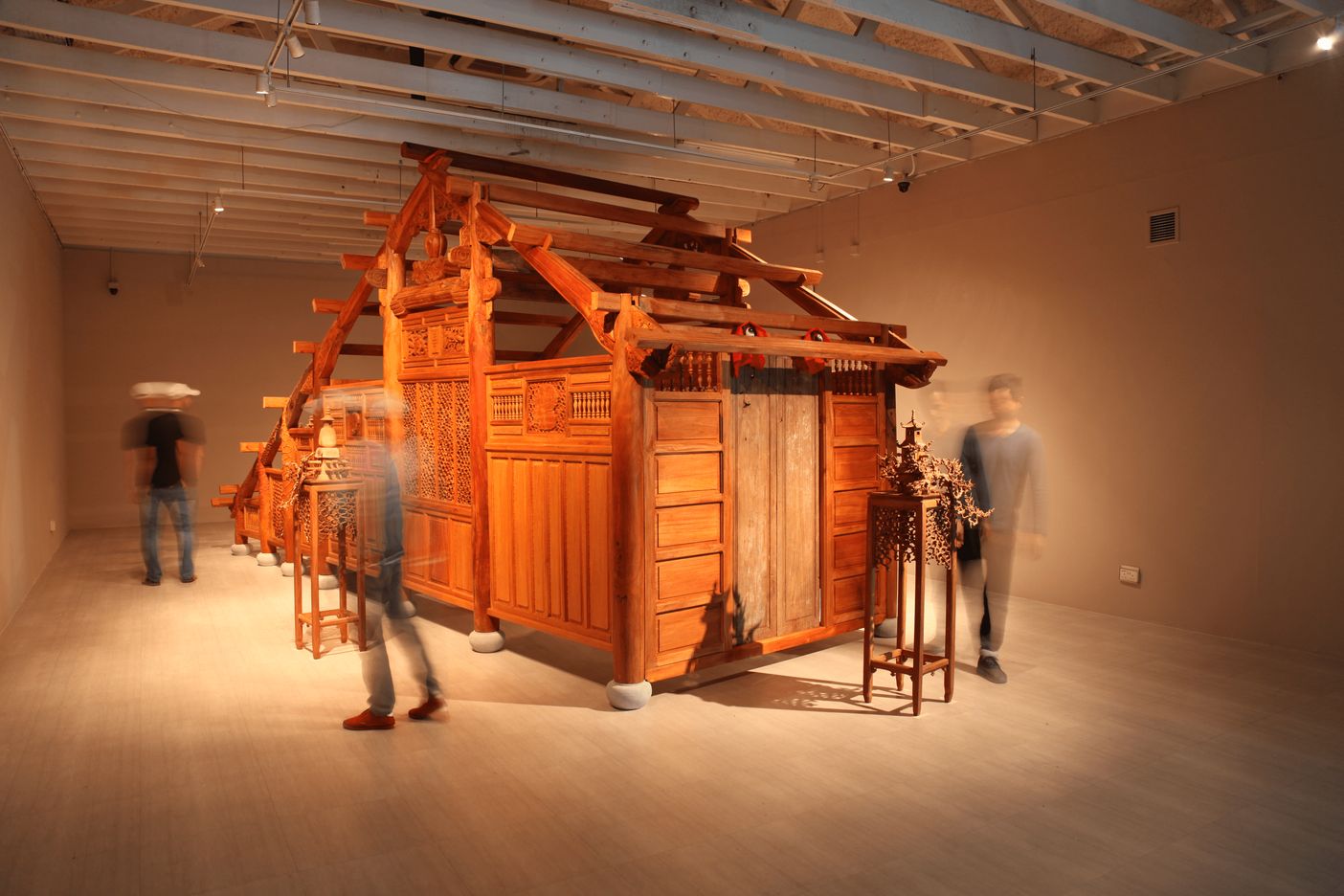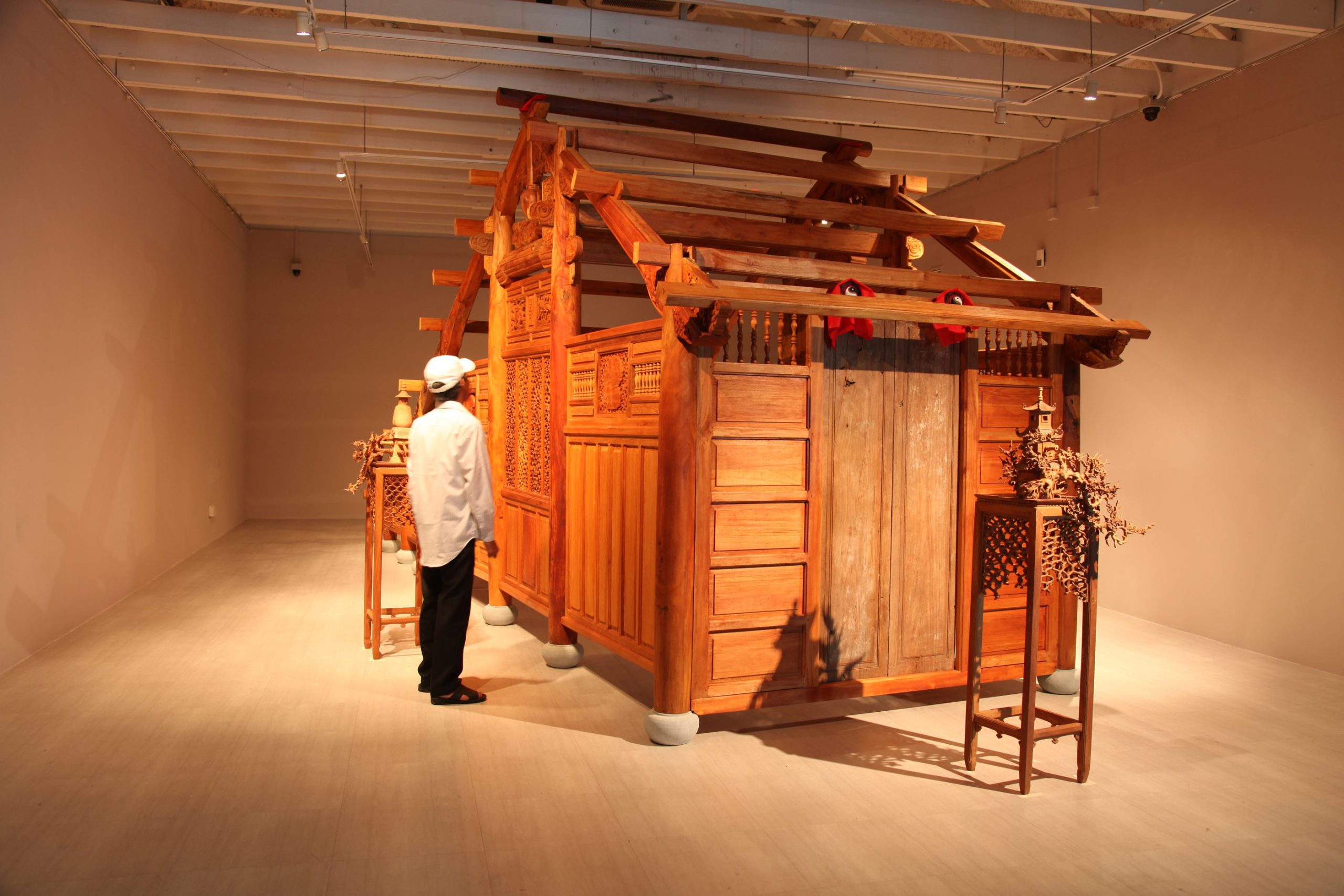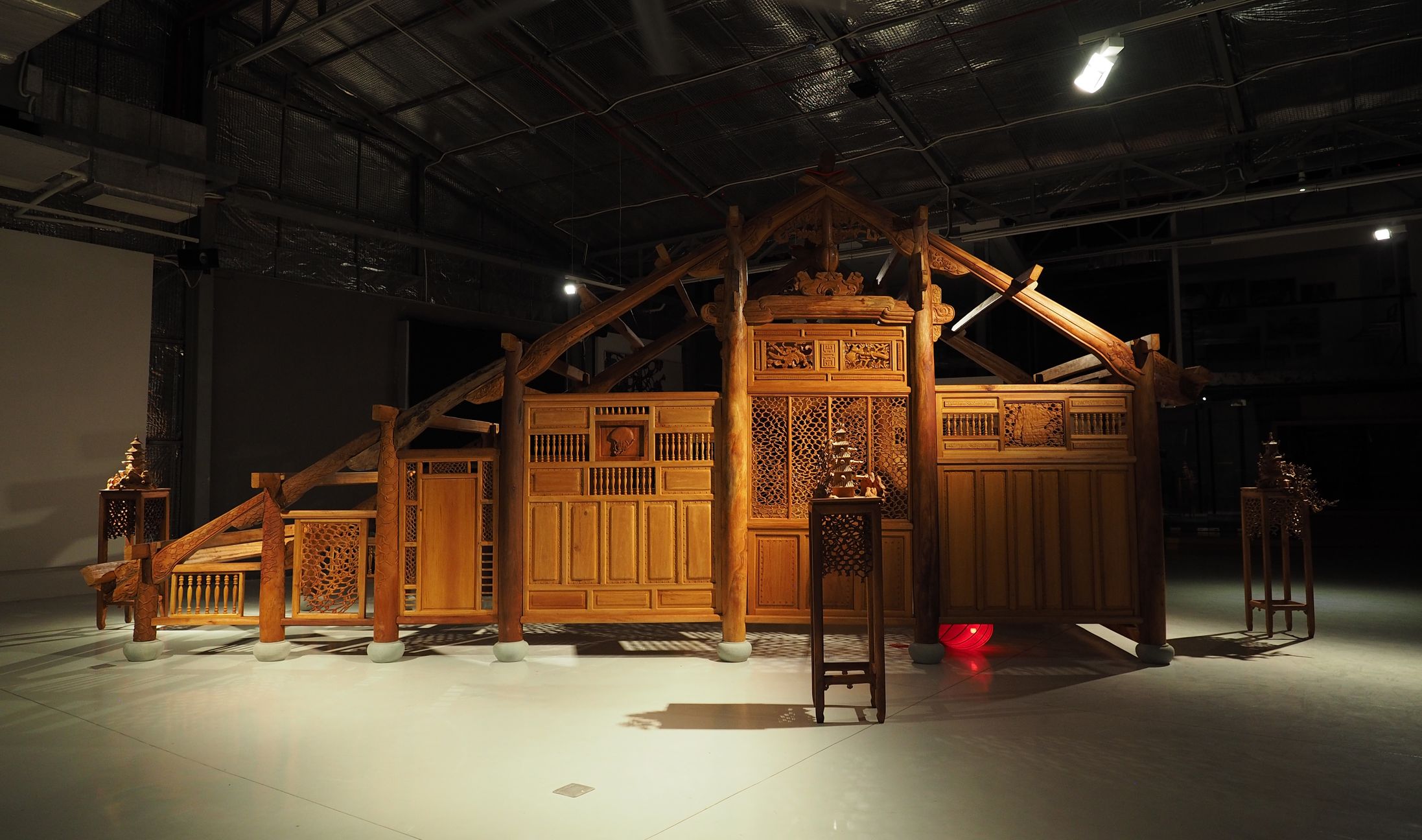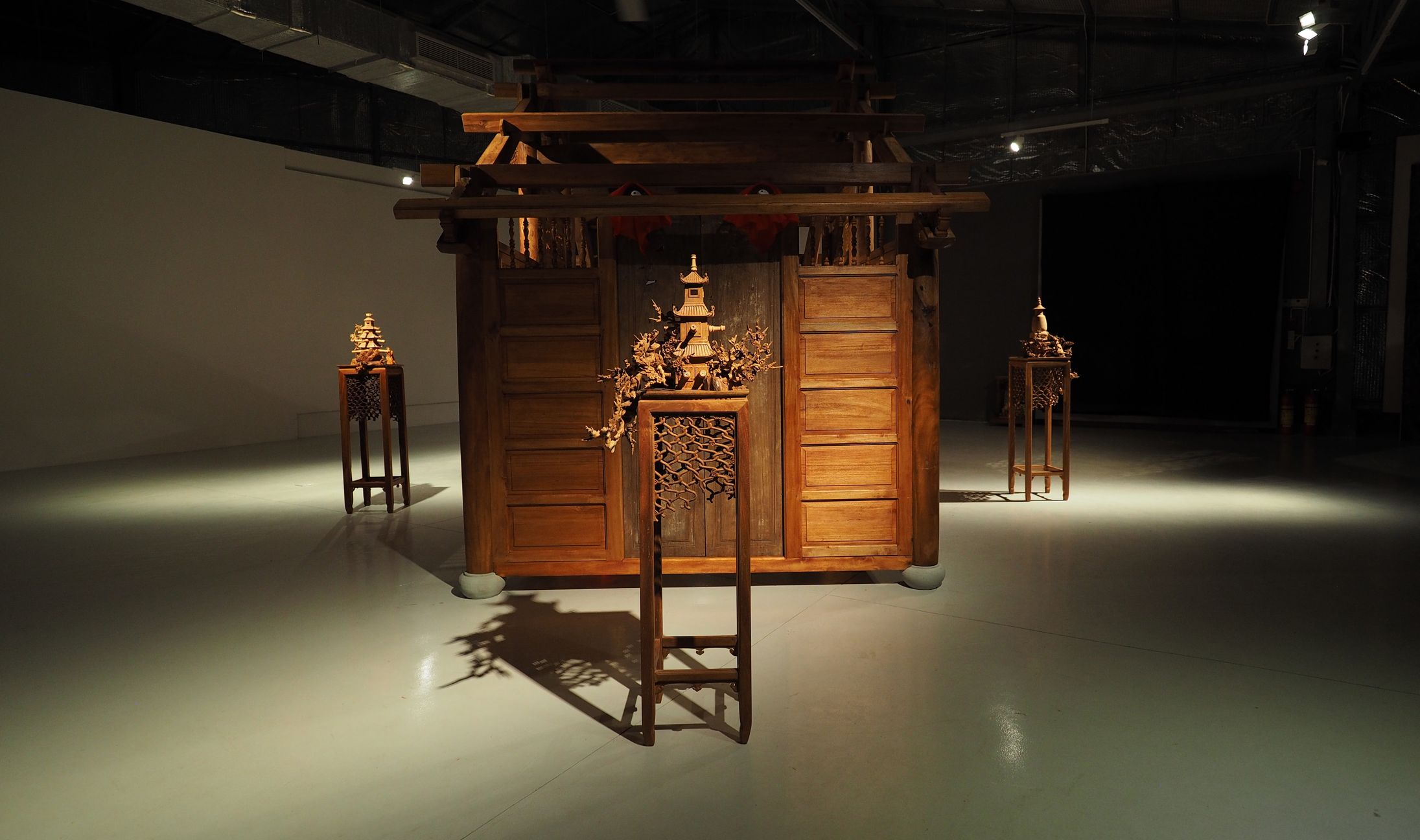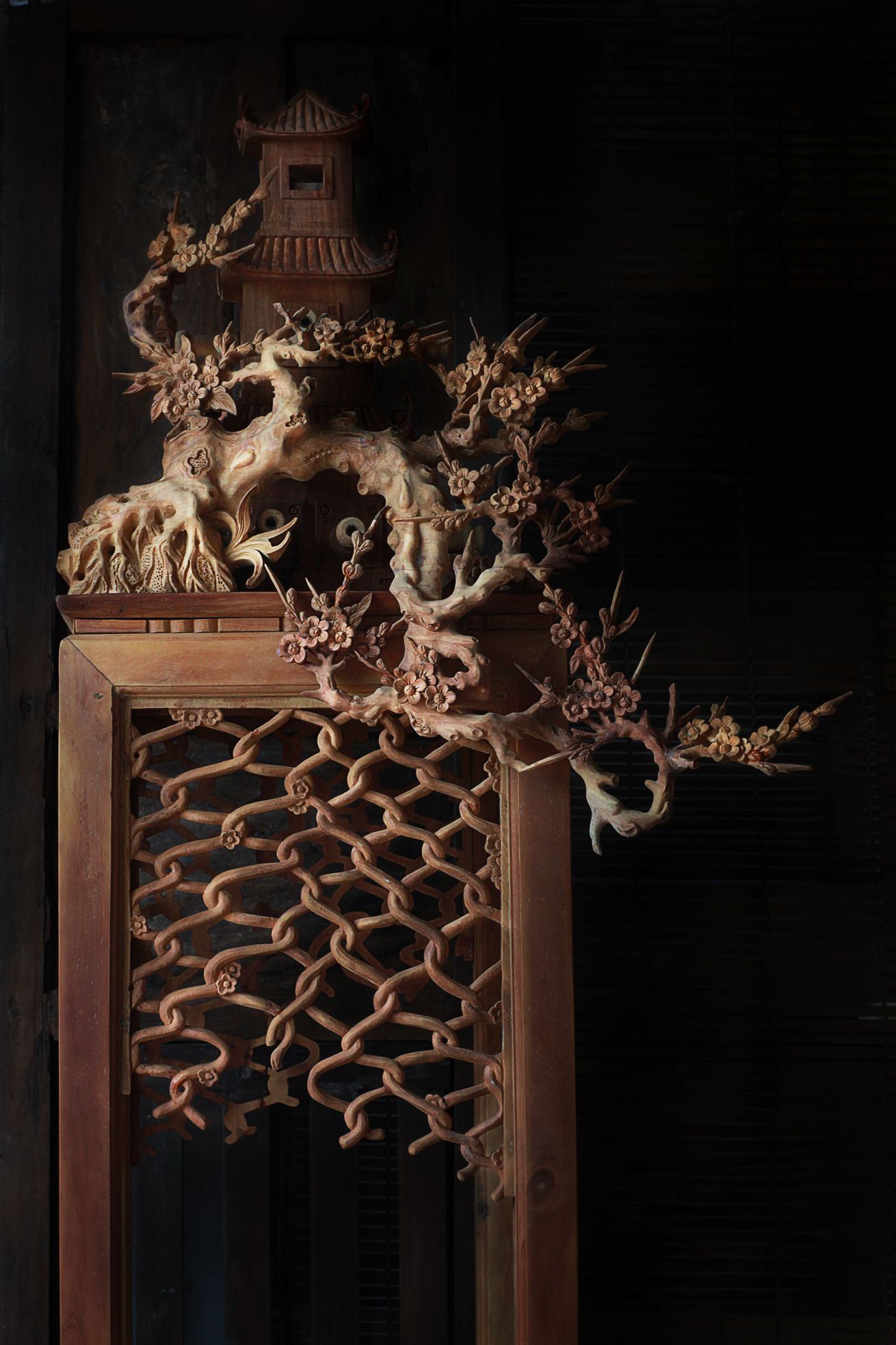Description
Walk into the world of Dislocate by Bùi Công Khánh and the wood of the jackfruit tree springs to life as a stunningly carved bunker; its architectural beams, wall panels and “guardians” referencing a myriad of social and cultural histories concerning Vietnam, via style and subject. Working with a team of senior expert wood carvers and carpenters from Hội An over a two year period, Dislocate embraces a complex interwoven set of narratives that pivots around this ancient city on the central coast of Vietnam – a city at the heart of Bùi Công Khánh’s practice and family history.
[...] Dislocate is a kind of fortress. The central structure, likened to a bunker, is deliberately left incomplete; its roof and walls are not solid, possessing space between beams where wall panels are spread randomly throughout. Taking traditional imperial architectural techniques of Huế (the ancient
capital of Vietnam on its central coast) as its style, Bùi chose the design of defense as its structure - it has only one entrance, its roof angled to hit the ground at the opposite end. The wood is a mixture of tones in yellow: the brighter color indicative of the youth of the jackfruit tree, in comparison to a darkened complexion illustrative of age. In Dislocate, Bùi combines the antique with the newly carved. He has literally taken apart the bones of a traditional home and re-purposed particular structural and decorative elements within his own design. The compass of this fortress is guarded outside by what could be likened as sentinels: four-miniature Buddhist pagoda sitting atop their own tall square plinth, each dramatically near-suffocated by penjing in representation of the seasons that govern the cycle of time – Spring, Summer, Fall and Winter. This is a quietly theatrical installation, a structure poised ready to protect from eminent danger – but from whence does this danger come? For Bùi, this fortress has been deliberately dislocated from any single identified threat, standing as monument to the historical resilience of Vietnam, a country that has successfully ousted the territorial expansionism of the Chinese, French, Japanese and American trade and military interests. Peer closely inside this fortress and you will note that certain wall panels are lovingly embossed with various flora, fauna and objects that directly refer to these historical moments of great conflict – an American GI helmet; lotus flowers, a Vietnamese military jacket, a phoenix, an axe, even a grenade (amongst many others). To understand the medley of these metaphorical symbols and structures it is useful to delve briefly into the history of Hội An and its strategic coastal location.
[...] Dislocate is deliberately carved entirely from the wood of this mít tree – a material he long marveled for the multifarious ways this plant had been made of use by his family. His father was a carpenter whose skill in carving this malleable timber was intriguing to a young Khánh, while his mother was adept at turning its bright yellow fruit into all manner of delectable dishes – jackfruit salad, jackfruit and coconut dessert, jackfruit soup – for this was a tropical plant cherished as a Vietnamese delicacy (raw, unripe and cooked). It is a plant easy to grow in wet mountainous climate, resilient in drought conditions, and as a perennial crop has long been cherished during times of scarcity.
[...] Dislocate is a fortress whose walls are held together by memories of great warring pasts, the irony of its beauty encapsulated in its wooden ‘penjing’ which threaten to engulf these four guardians of worship. In ‘Dislocate’ it is as if this ancient art - to nip, tuck, graft and nudge a plant’s growth into a particular shape – has gained its own powers, for here it is the penjing that seems to prevail over man’s institutions of spiritual aspiration.
Dislocate is Bùi Công Khánh expressing his appreciation for not only his ancestry, but also his paying homage to Vietnam’s historical resilience. It is an artwork that highlights instruments of social control; sharing the dilemma of living a discriminated ethnicity; while also questioning who has the right to control what is natural, man-made or celestial. Bùi Công Khánh asks – is it possible for history to be revisited without bias? In the absence of any specific threat within this installation, Bùi gives us space to pause, to contemplate what social bias we may carry unknowingly, to “dislocate” ourselves from our perceived reality in a hope to re-conjure its largesse.
Text by curator Zoe Butt, Dislocate exhibition, The Factory Contemporary Arts Center, 2016.
